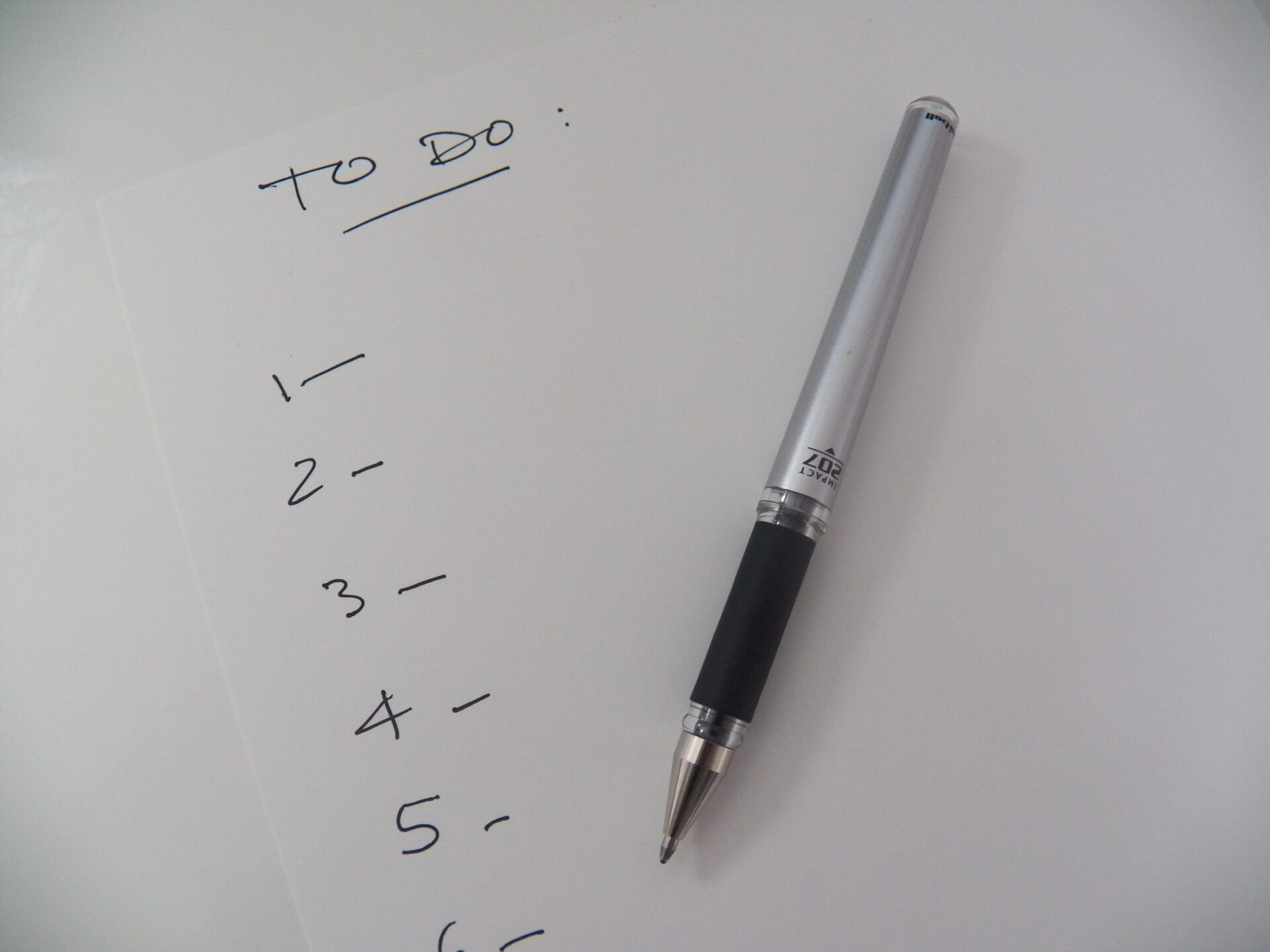To-do lists can be the key to productivity, but only if they are believable and achievable.
Trying to be productive working from a brain dump of everything we want to get done is NOT believable, and it’s generally NOT achievable.
I hear this frequently when working with clients on productivity:
“I have a list of things I want to do and all the time in the world to do them, yet I don’t. What’s up with that?”
There is tremendous power in knowing what we should do and when we should do it. Once we slot in non-negotiables like appointments, many of us have much unstructured time during the day.
I look at lists in a couple of different ways:
- A “to-do list” is a brain dump of everything I want to accomplish.
- A “priority list” is the prioritized list of what needs to be done by when.
Here are some tricky things about to-do lists:
- Capturing all our to-do intentions in one place is a great start, but that list can be overwhelming.
- An overwhelming list may result in not starting because conquering the list appears impossible.
- Everything on the to-do list may seem to have the same weight.
- Often a to-do list isn’t prioritized by importance or due dates, creating confusion about where to start.
- Many times our to-do list is full of projects, not tasks. Projects are too large to activate.
Welcome to the “Priority List.”
Here are some steps that you can take to move items from a to-do list to a priority list:
- First and foremost, identify if the item on your list is a task or project. People often put a project that requires multiple steps over time on their to-do list, and the item becomes too daunting to tackle. “Sweep the floor” is a task; “pick out the new paint color for the bedroom” is a project. It’s helpful to break down your priority list into manageable steps that are easily attainable.
- Recognize if there is a hard deadline with consequences. Making that distinction will help with prioritization. “Pay homeowner’s insurance by July 1st” has a hard deadline, “pick out the new paint color for the bedroom” may not.
- Recognize if other stakeholders need to be a part of the action plan. If the task is something you can do on your own, great. Put the task on your list. If there is another stakeholder, create an action item that involves the other person, like “talk to Bob about bedroom paint color.”
- Recognize if specific times of the day/week/month are most suited to accomplishing the task. “Pay homeowner’s insurance” may be slotted into any day/time; however, “Make a dentist appointment” may need to be put in a Monday-Friday, 9:00 – 5:00 timeslot.
- Recognize when you have the most energy in a day. Put the top items in that time slot, and you will have more resilience to power through the task.
Now that you have a priority list with a rough schedule of when things need to be done, take these next steps:
1. Slot around three items into each day. If you put too many priority items on each day, overwhelm may occur.
2. Start each day with something easily attainable. Your brain will recognize the win, receive a dopamine hit, and be excited to take on the next task.
3. Mark each item as completed with a checkmark or draw a line through the task. Again, you will have a visually recognizable way to track your accomplishments, and you may also get a second dopamine hit with that kinesthetic process.
Now that you have a roadmap for creating a believable and achievable priority list, where will you start?
Cindy Jobs, PCAC, ACC
Looking for more information?
Click here for ADHD-friendly Time Management Tools
Click here to schedule a complimentary breakthrough session.
For more helpful information, follow me on Facebook.







